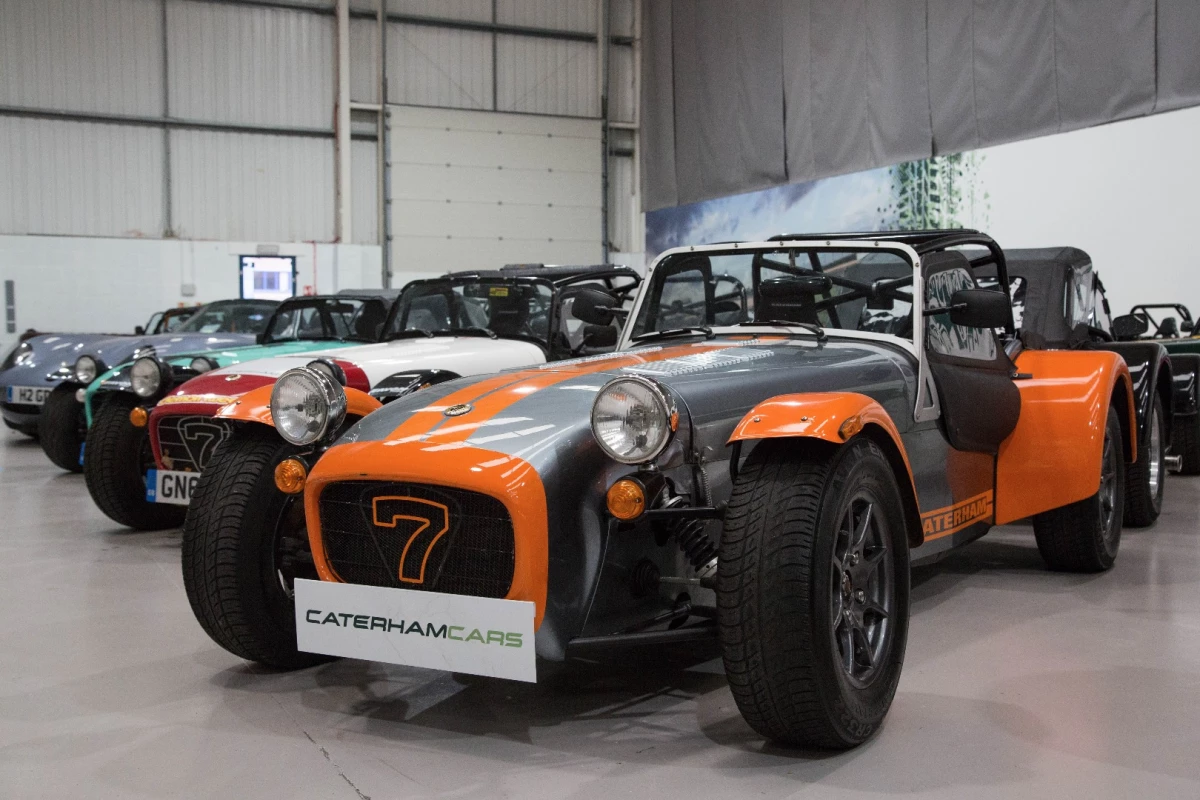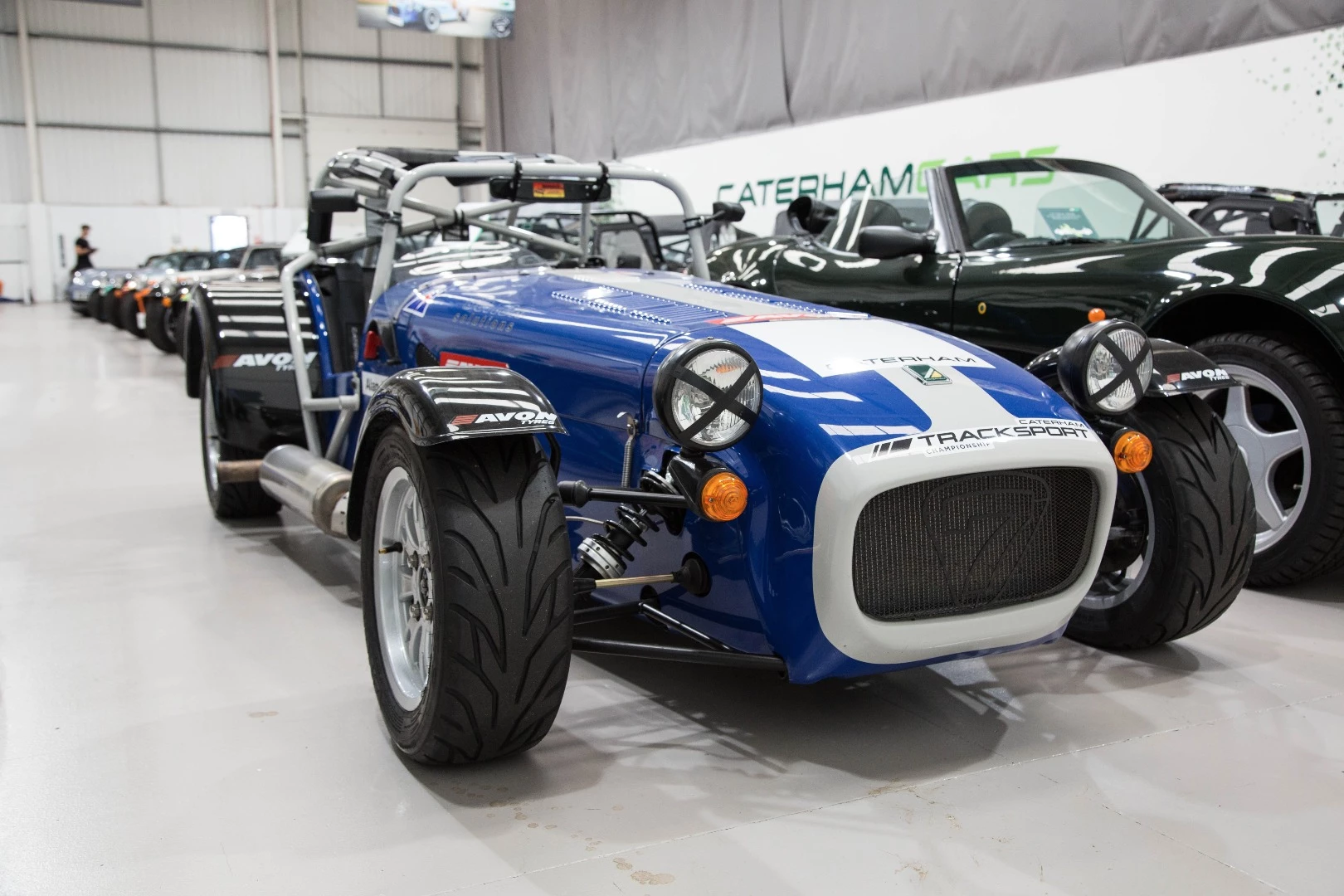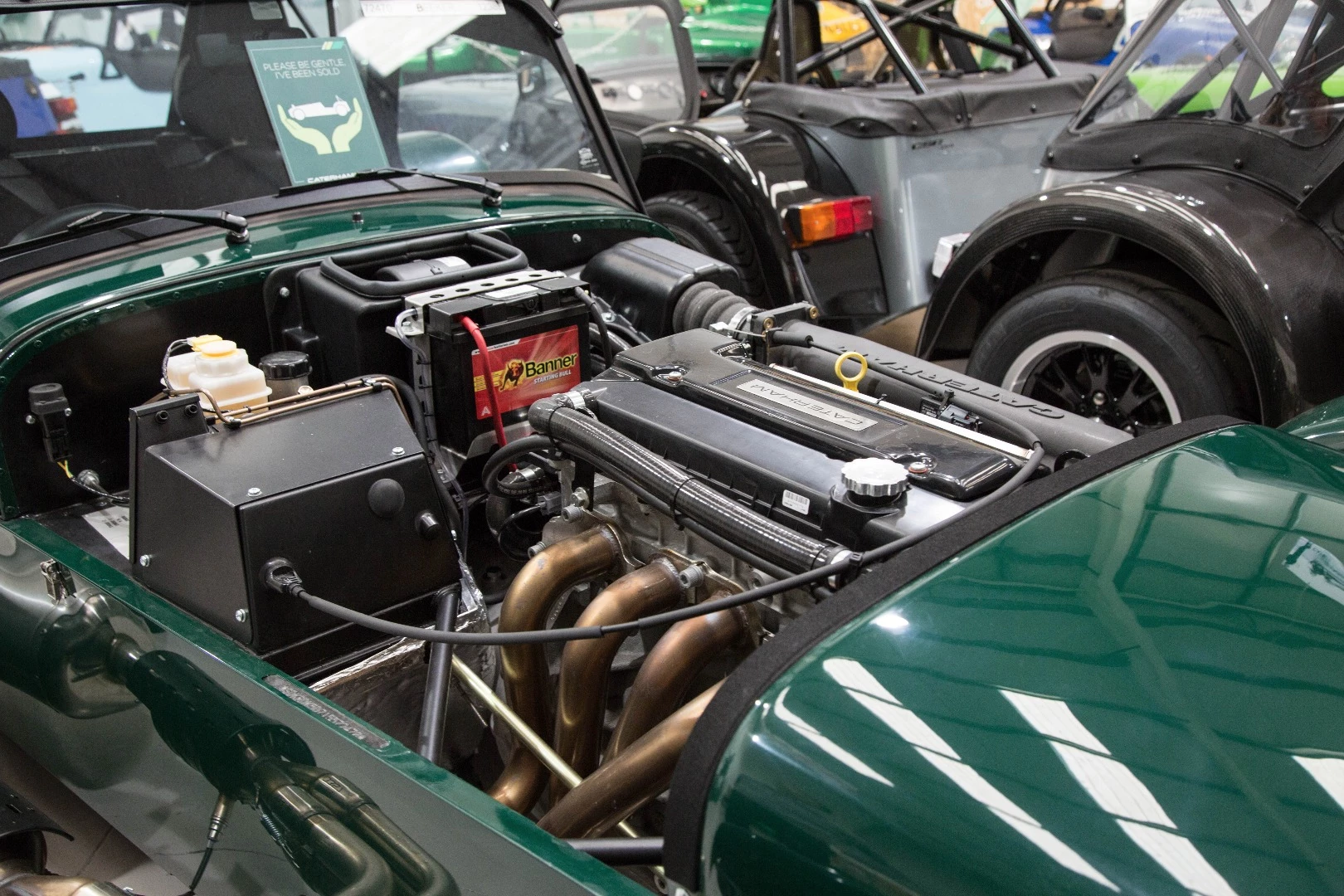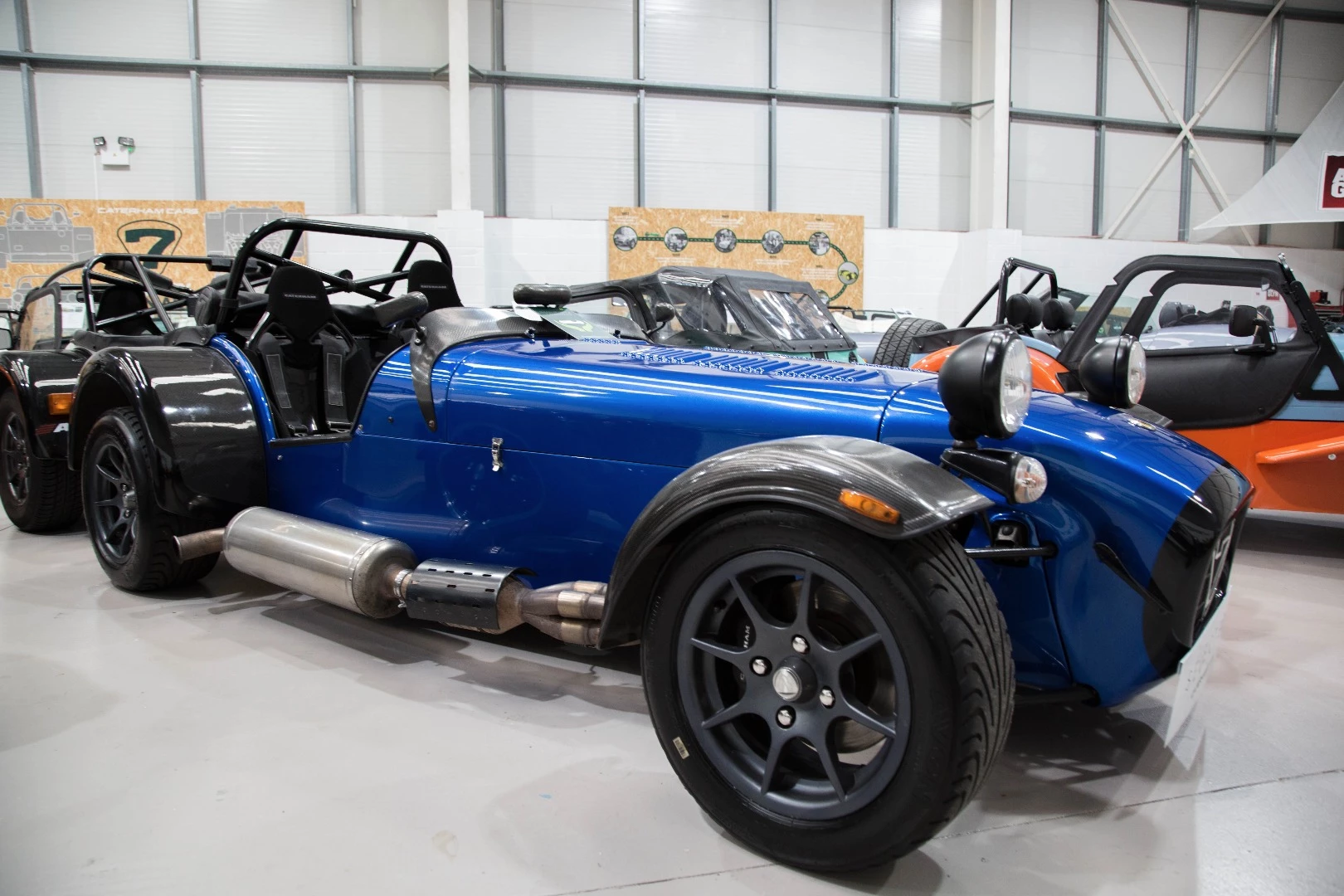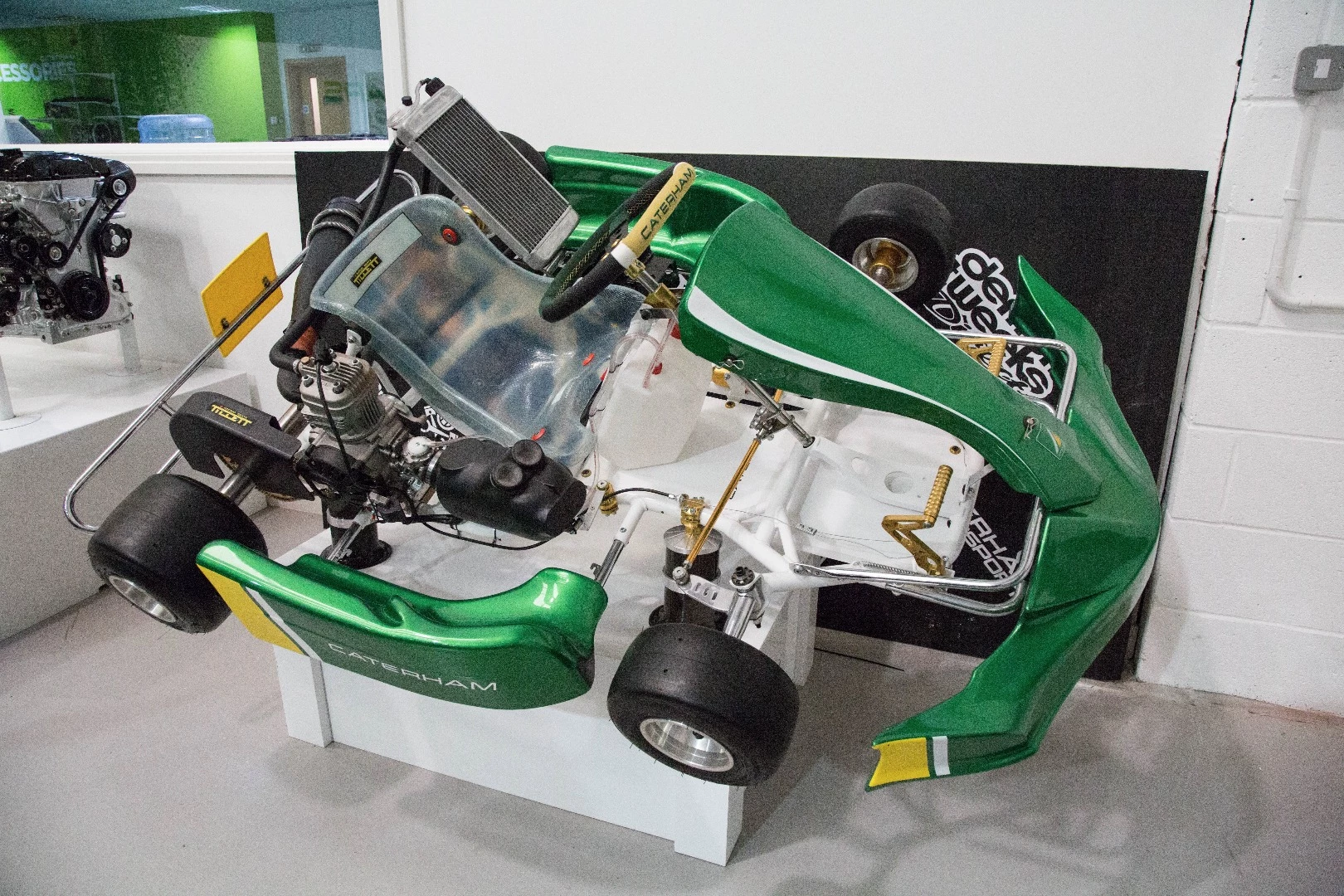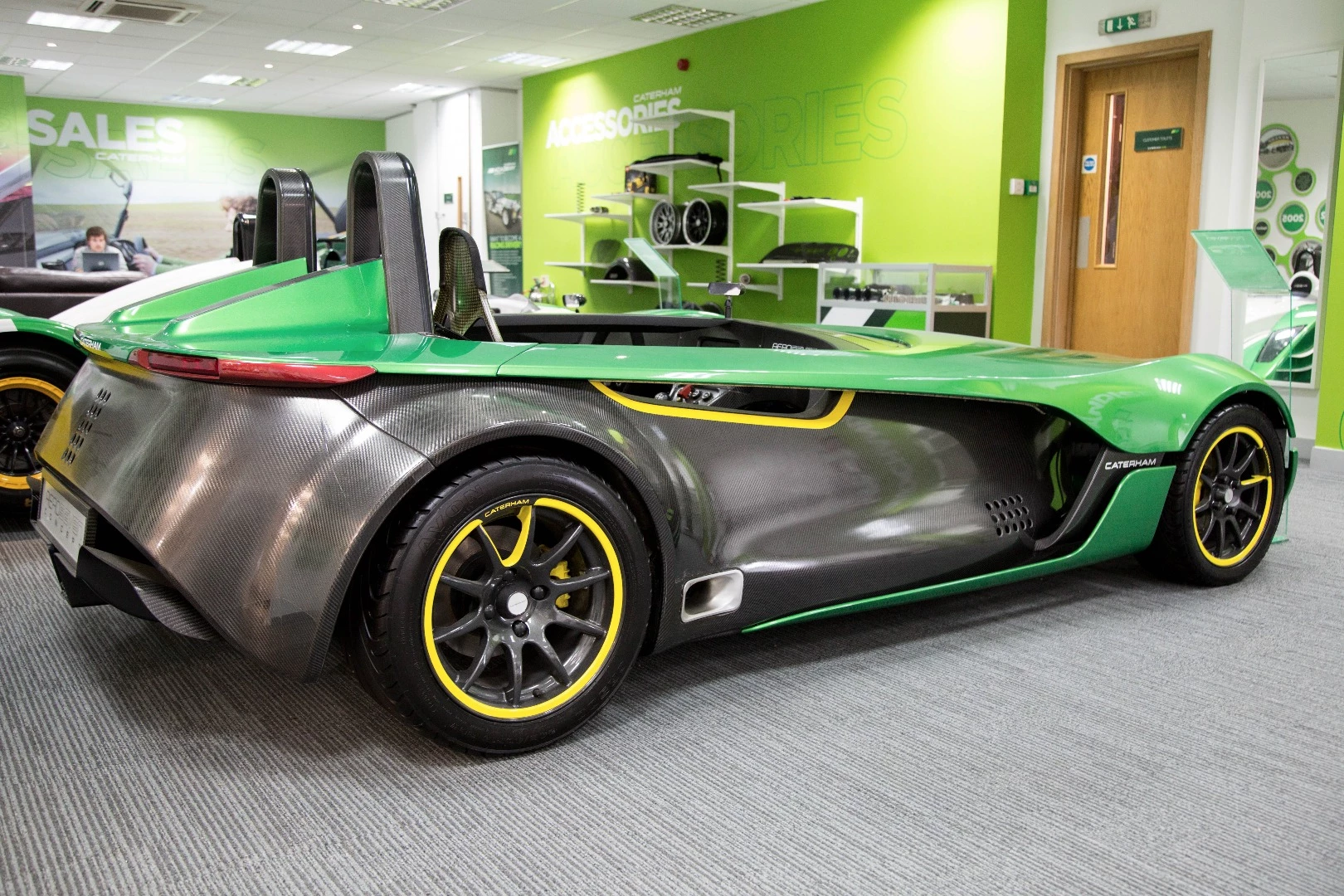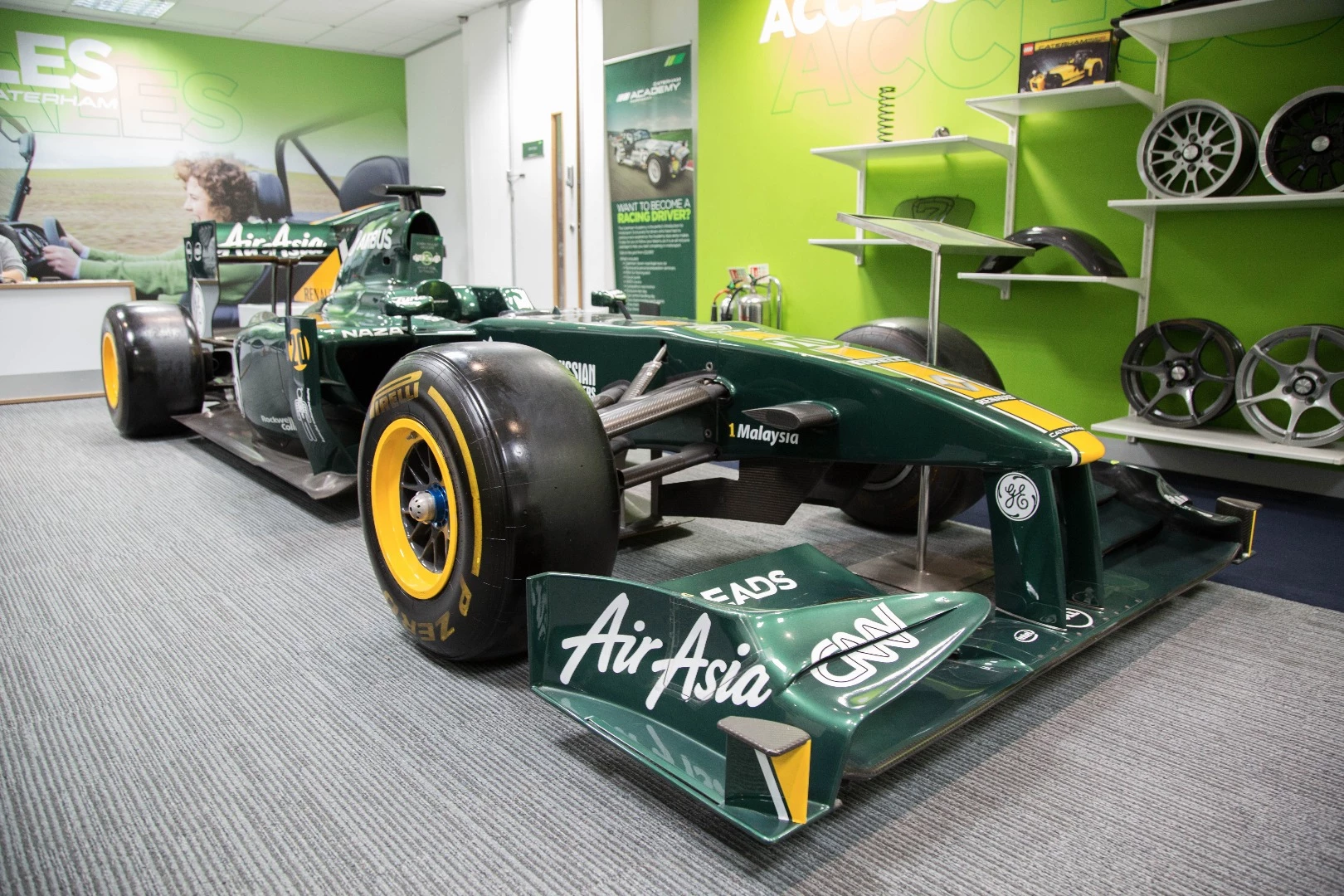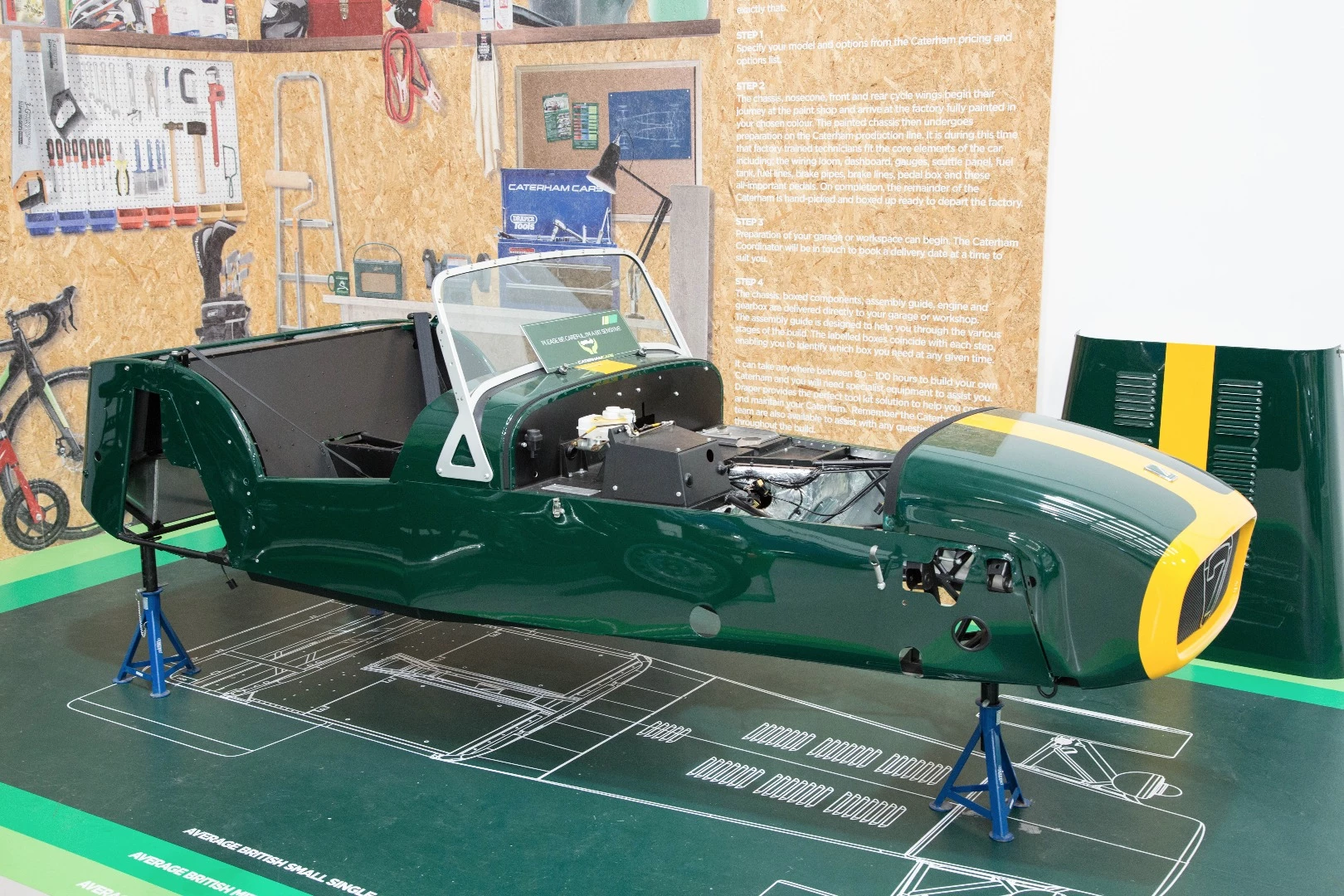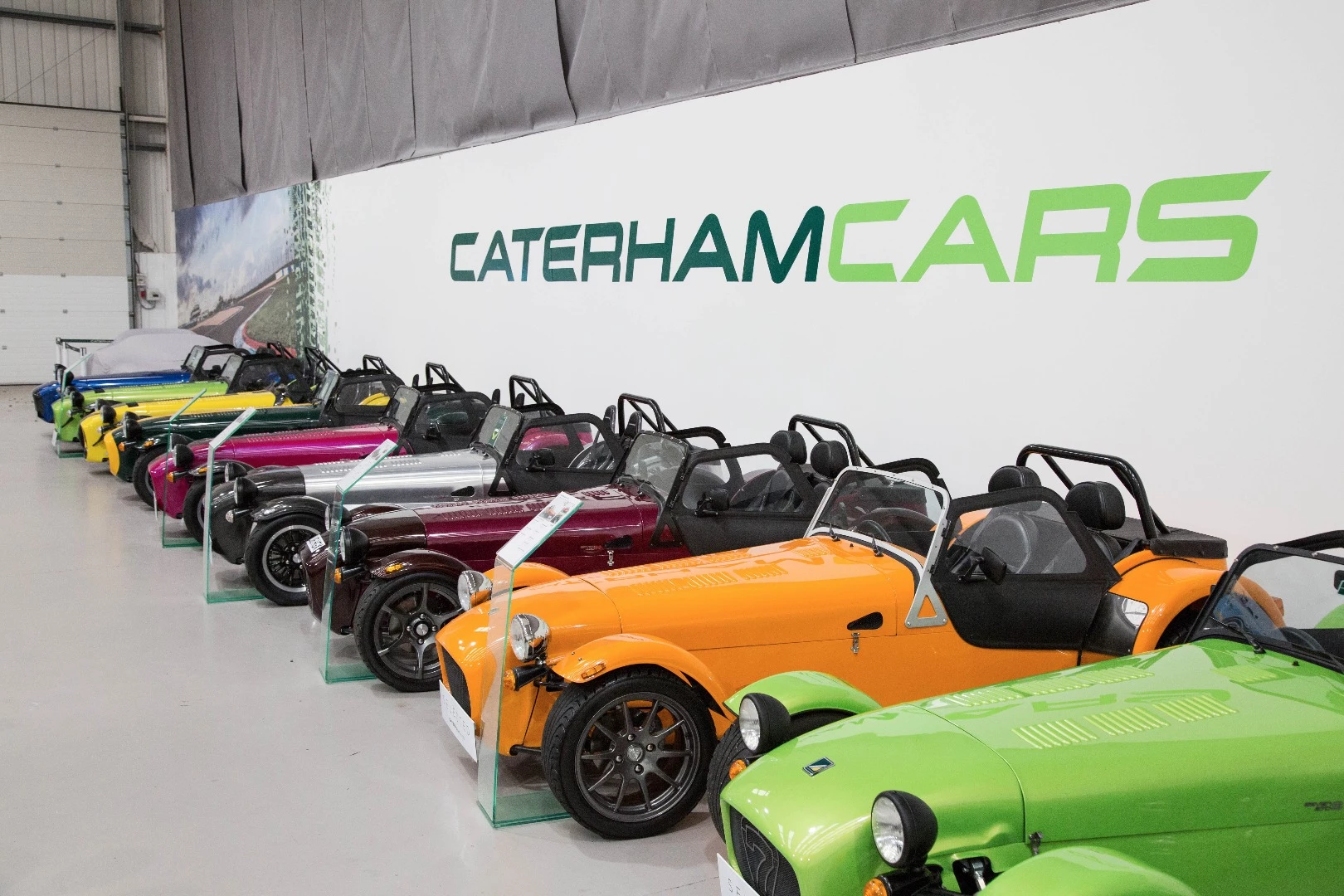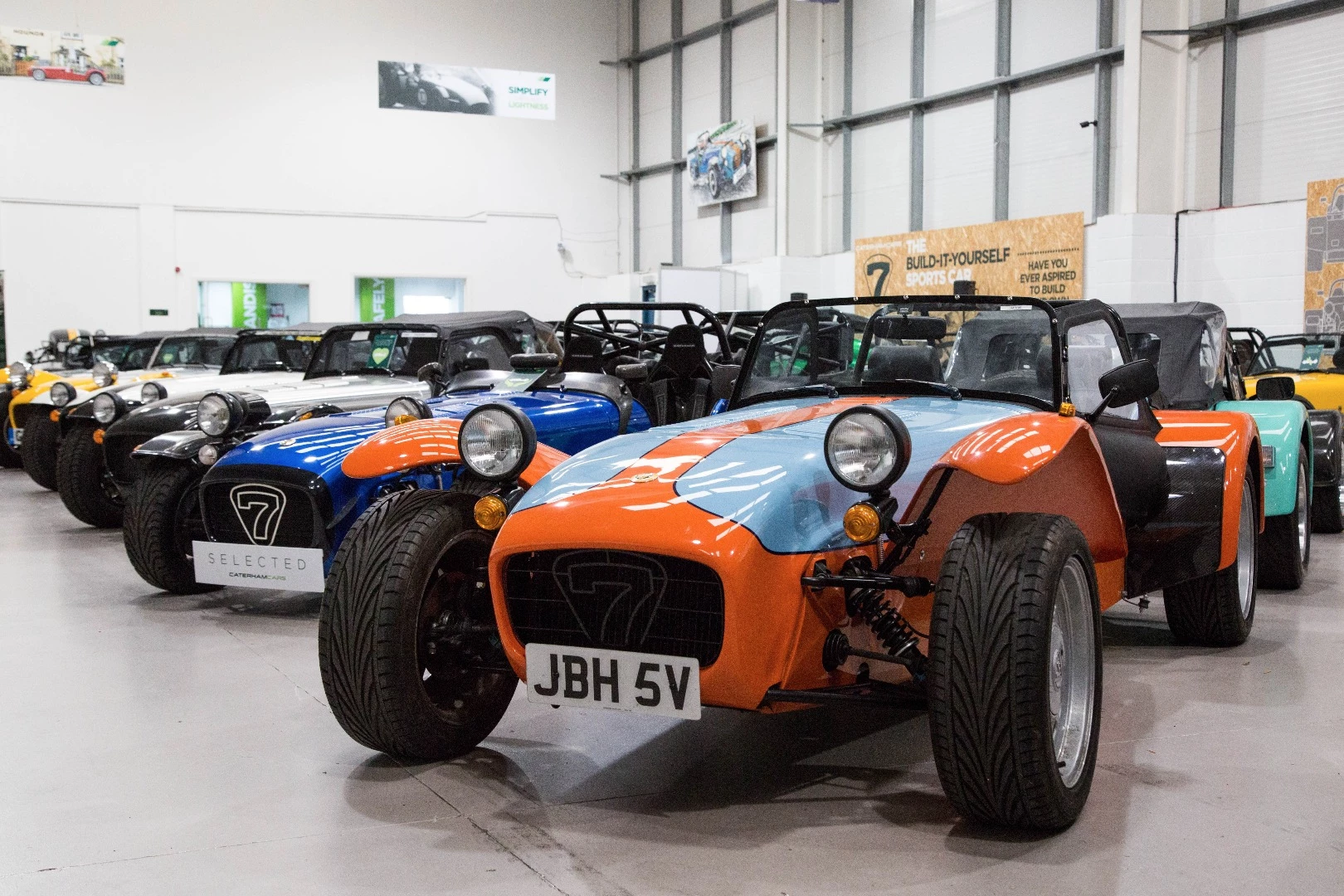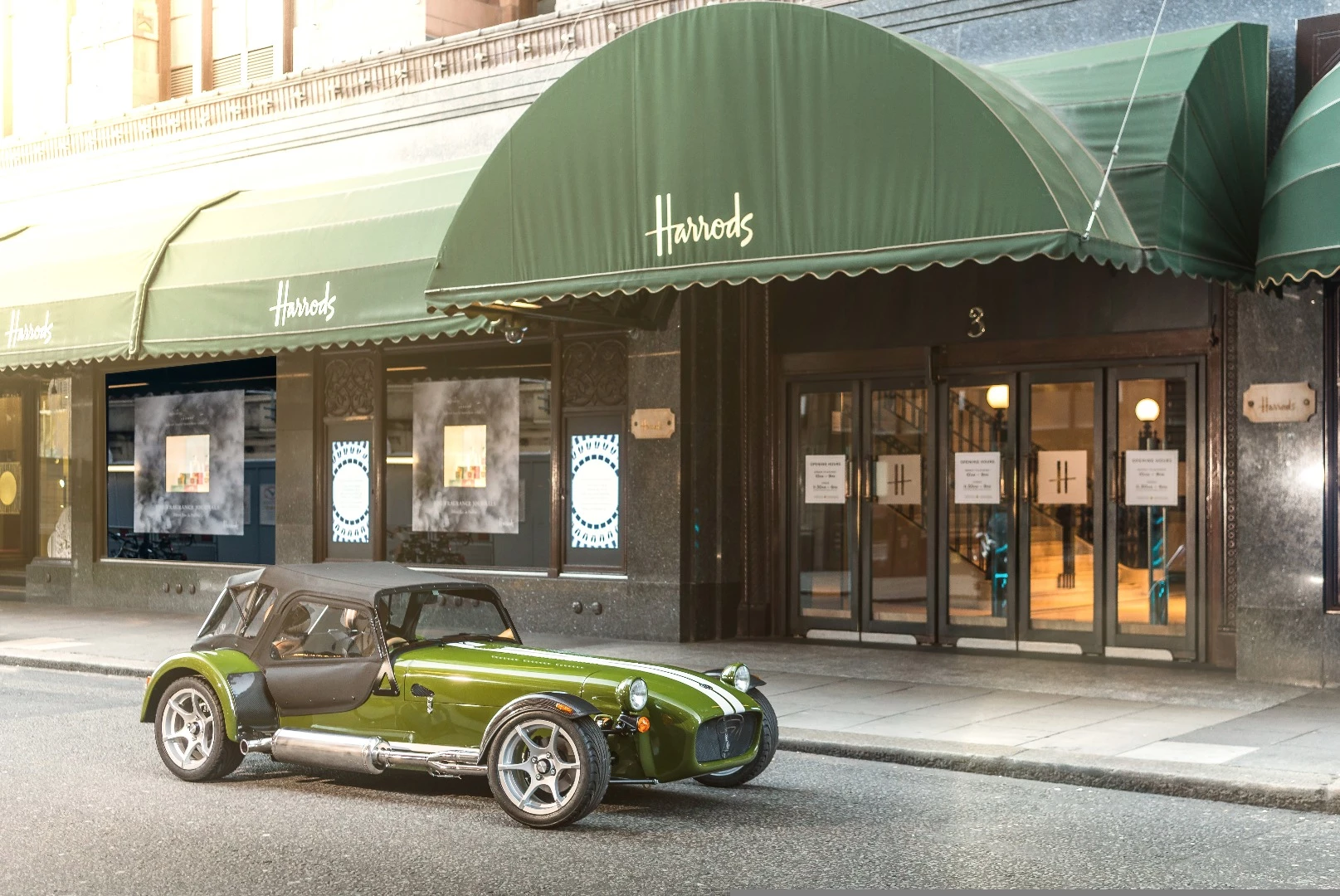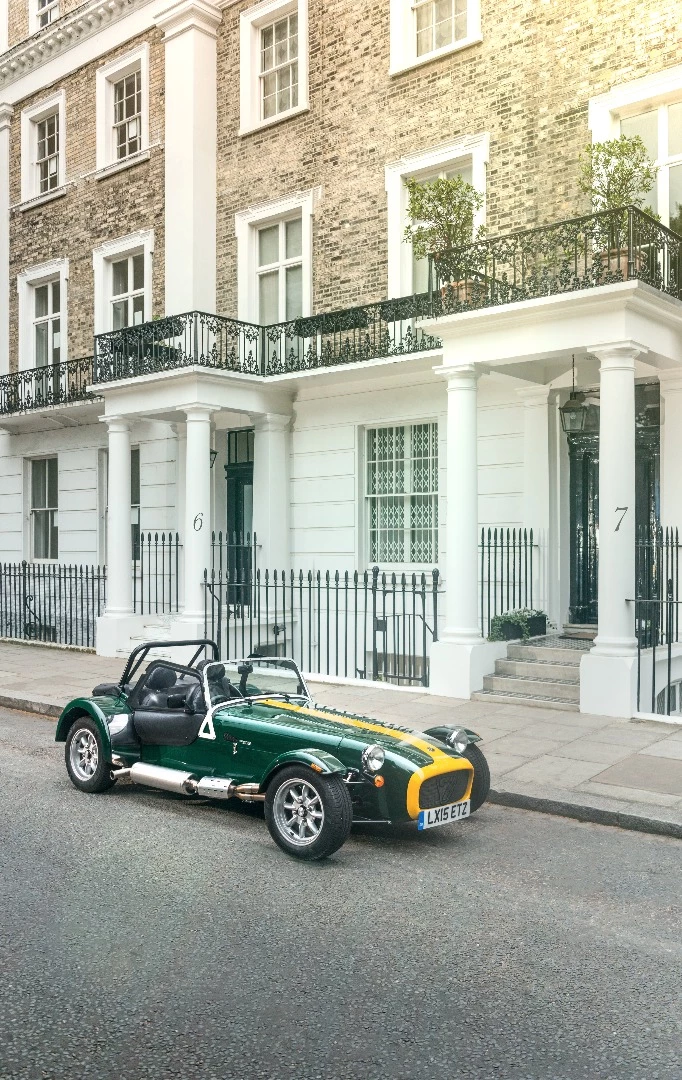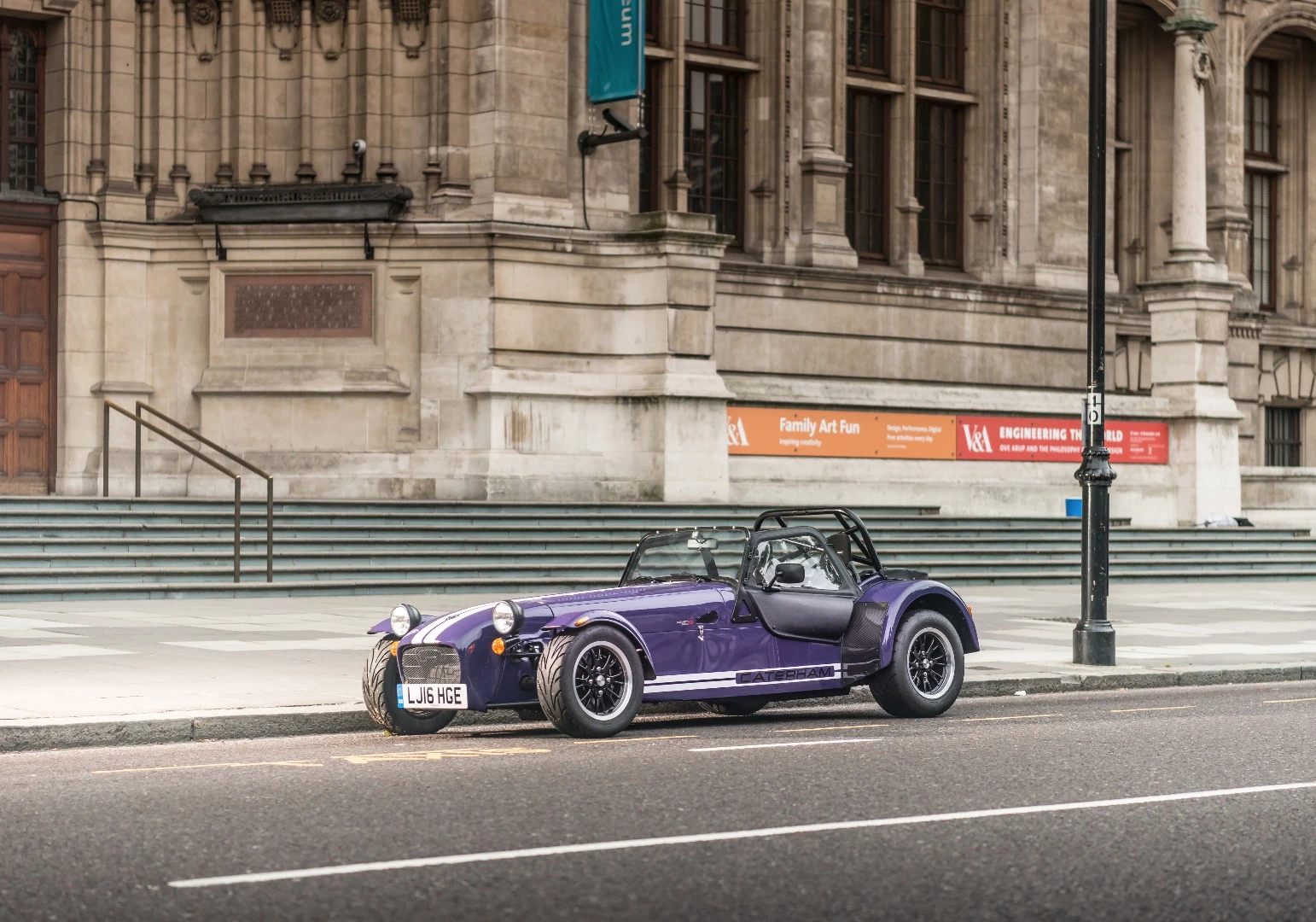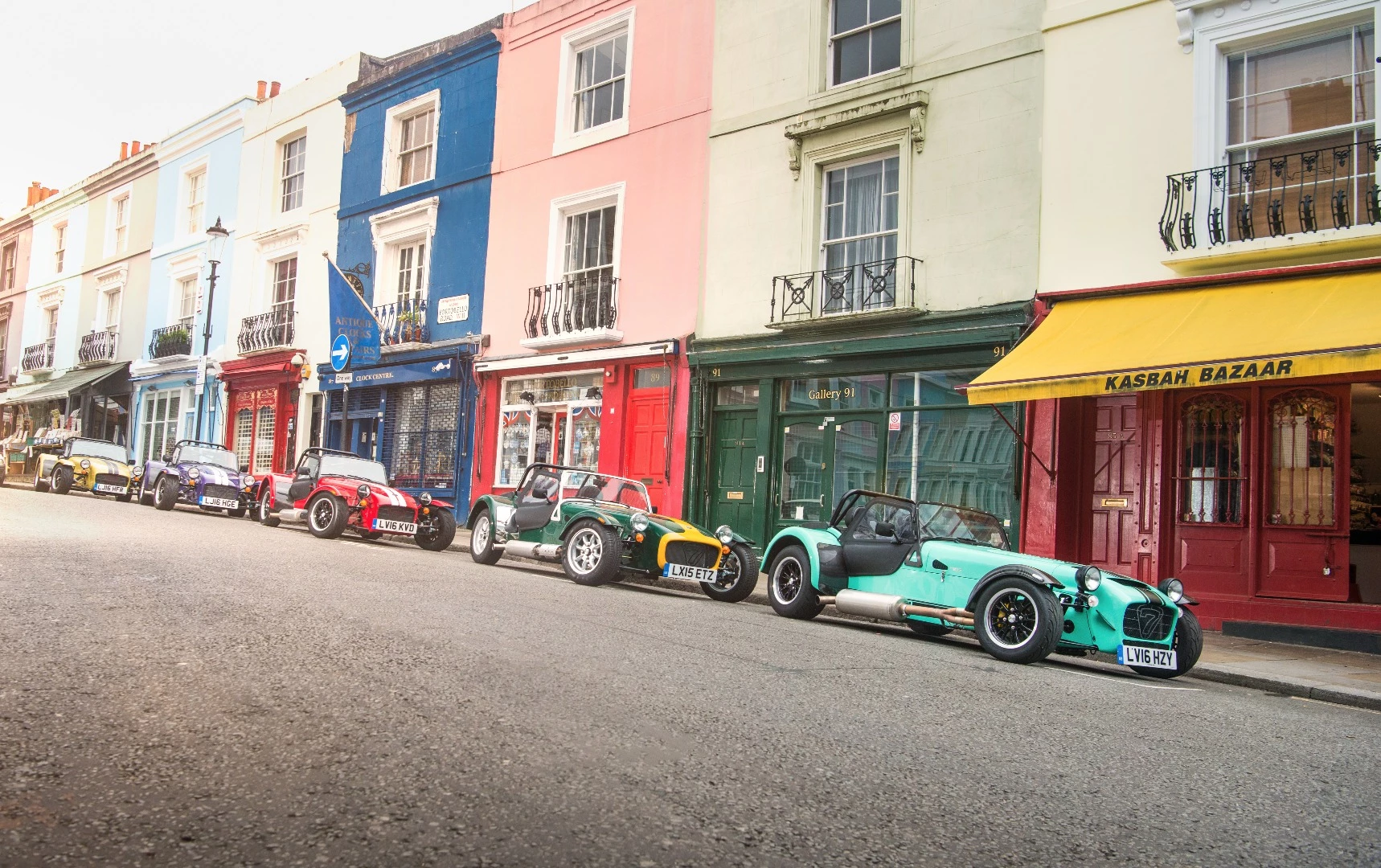A lot of things have changed in motoring over the past sixty years, but not everything. Caterham cars might have different engines under the hood, and they might use modern materials, but the lightweight, driver-focussed sports cars are still inextricably linked to the original Lotus Seven. New Atlas took a trip to the company's headquarters in Crawley, UK, to find out what the brand is all about.
Founded in 1973, Caterham isn't actually responsible for the design of the original Lotus Seven. Penned by Colin Chapman, the Lotus Seven was first built all the way back in 1957 and had a production run spanning sixteen years before Lotus decided to focus on its racing efforts. Rights to the now-iconic design were sold on to Caterham Cars in the UK, and the Caterham story got underway.
Although the engines have changed, and there are new materials and technologies worked into the design, the basic shape of the Seven hasn't really changed in the last 70 years. As trends have come and gone, and new takes on the track day formula have sprung up, the Caterham Seven has endured.
"It's an acquired product, it's not something you buy because of any practical reasoning," explains Marcus Randall, Marketing Manager at Caterham. "You buy purely because of an emotive connection, you simply enjoy the experience of being behind the wheel. We position ourselves as a niche automotive manufacturer."

The affable Randall clearly loves his cars. He worked at Dunlop before making the move to Caterham, where he's still brushing up on the brand history and trying to spend some quality time behind the wheel of everything in the range – critical to understanding the brand, of course.
Sales figures fluctuate, but this year has been a good one for the company, which is on track to deliver 550 cars. Much of that demand comes from within the United Kingdom, although Europe and Japan also contribute a handy chunk of sales. Along with the dedicated Caterham showroom, there are three dealers around the United Kingdom.
"Japan is one of our strongest markets," says Randall. "Thirty cars have found homes in Japan this year, and there are now twenty Caterham dealers spread around the country. "Germany is probably our third largest market," he adds. "France is probably our second largest."
The manufacturing arms of the company are scattered around the British countryside. A facility in Westbury is responsible for developing the chassis and roll cages, while a factory in Dartford is the main manufacturing site, handling a lot of engineering and tech development. New Atlas was shown around the showroom in Crawley, where potential customers and fans of the brand can get up close with the current range, along with previous concepts and ideas that didn't quite catch on. (Stay tuned for more on those at a later date.)
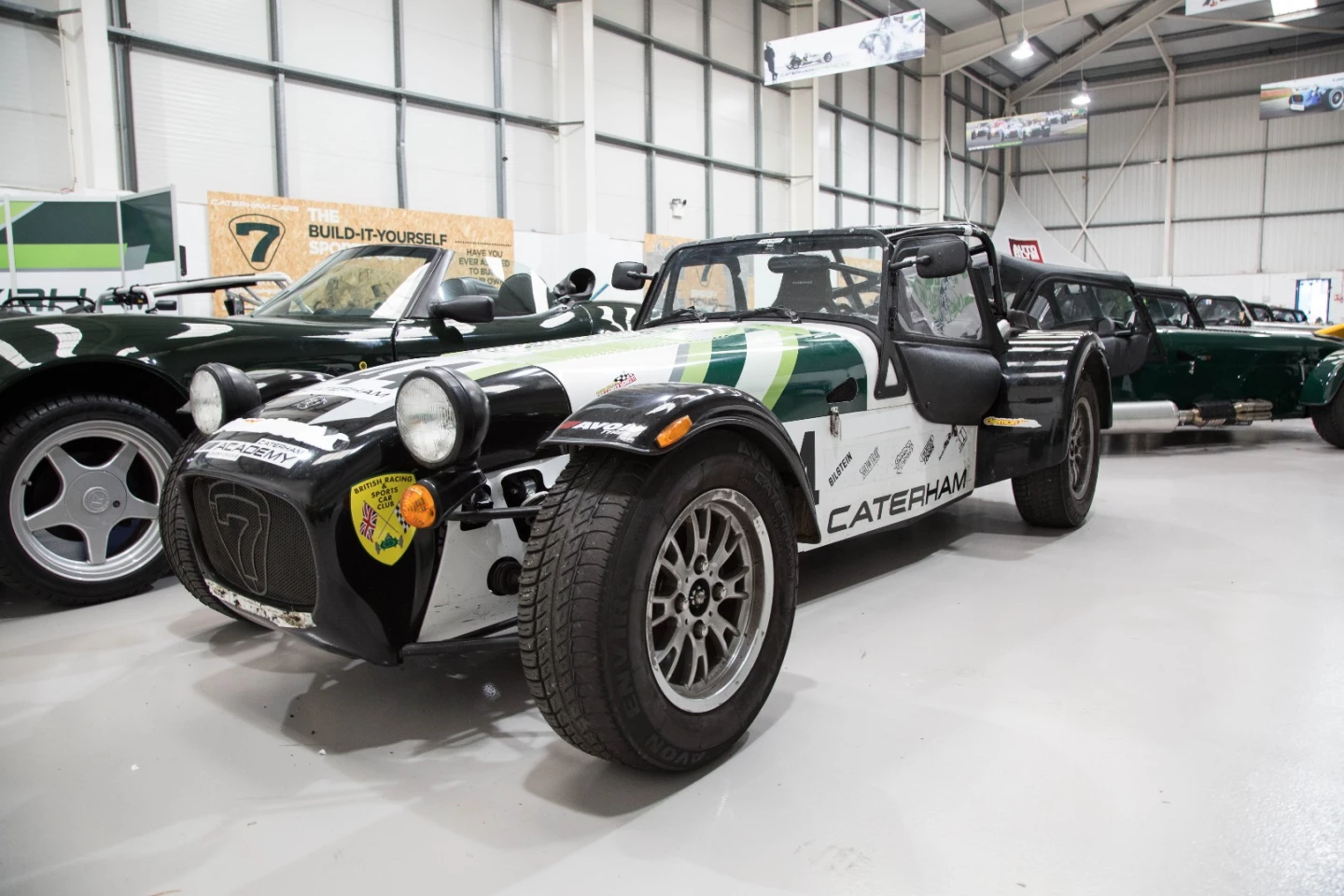
Currently, the range kicks off with the Seven 160, powered by a three-cylinder Suzuki engine with just 80 hp (60 kW) of power. That doesn't sound like much when you can buy family sedans with more than 700 hp (522 kW), but a featherweight 490 kg (1080 lb) curb weight means massive power isn't a prerequisite for massive fun.
Moving up in the range brings about more power and fatter tires but the ethos remains the same, with a real focus on stripping away the unnecessary elements and focusing on the driver. It's throwback motoring, wind whipping around the cabin, exhaust barking and every little bump in the road being shared with the driver and passenger through the seat. We only had a brief taste of life in a Caterham, but that taste has left us hungry for more.
So, what happens next in Crawley? The Lotus Seven is an icon, but even icons need to move with the times. The Land Rover Defender is dead in the water, the Mustang can be specced with an EcoBoost engine and Morgan, purveyor of wooden-framed cars, wants to go hybrid by 2020. Can Caterham keep quietly going about its business, refining its formula as the world keeps changing around it?
Concept cars from the past few years would suggest the brand has dreams beyond the Seven. The AeroSeven (pictured below) was revealed in 2013, designed to provide a sneak peek at what the future of Caterham might look like. Built around a modified version of the standard Seven chassis, the aerodynamic body is made of carbon fiber, and the interior borrows from the now-defunct Caterham F1 team with its button-heavy steering wheel.
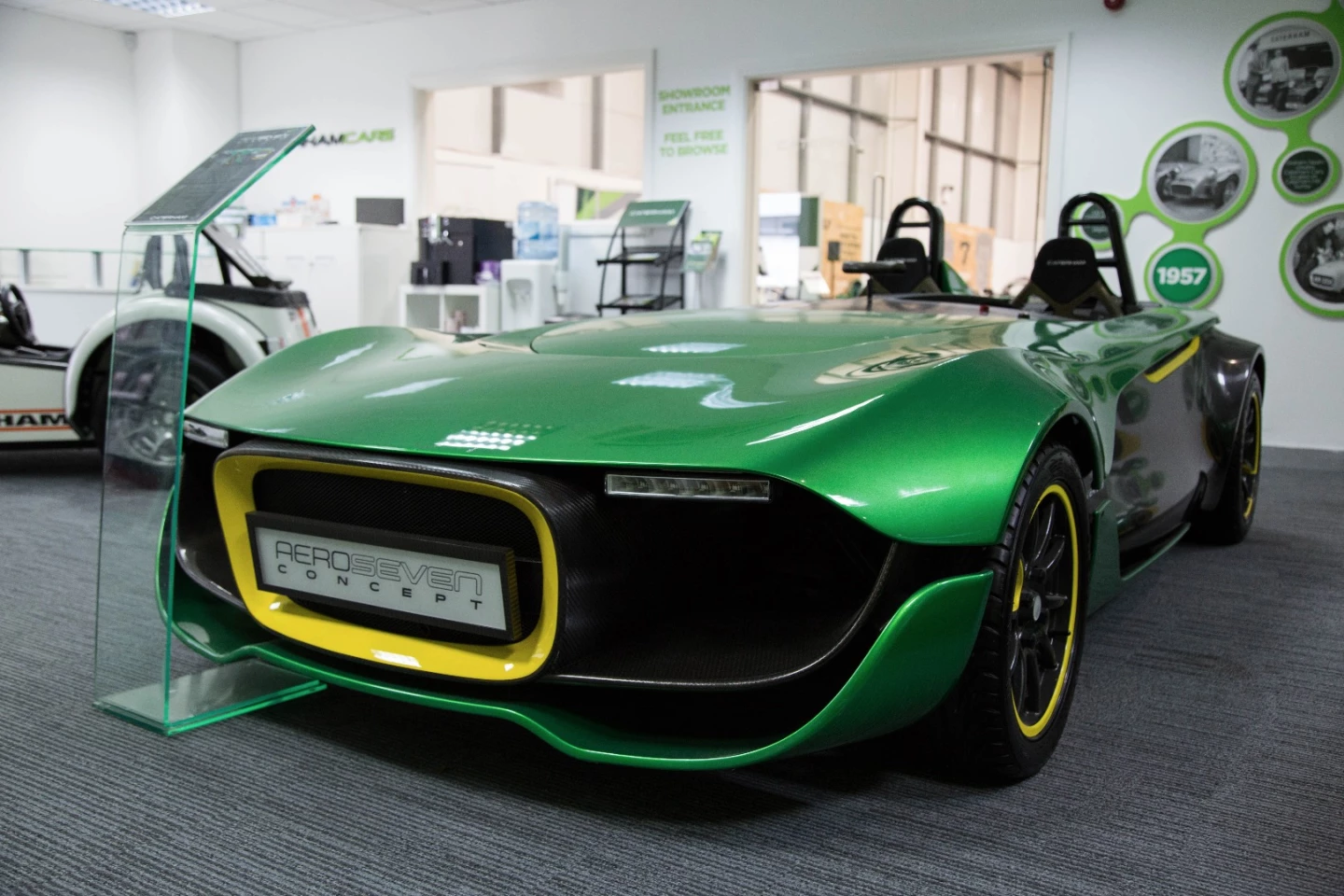
"It was about demonstrating the technical capabilities we had," Randall says of the AeroSeven. "It was about putting in new technological innovations, different suspension setups, slightly differently tuned engines, different dashboard layouts."
"A lot of the engineering expertise that went into this concept has cascaded down into our road car products. Some of the suspension setups seen within this vehicle did, naturally, make their way into road going products like the 620[R], and to a lesser extent the 420[R] as well."
Sitting alongside the AeroSeven is the SP300. It looks like a Le Mans prototype, but it was designed to be road legal, and got closer to production than the AeroSeven. With functional aerodynamics and a roof, it's a much more sophisticated proposition than anything else sitting on the showroom floor, and proves Caterham knows how to do aerodynamics. Given the Seven is essentially a flying brick with a windscreen, you could be forgiven for thinking otherwise.
Ultimately, there is no better way to prove technical prowess than in F1. Caterham competed in 56 Grands Prix between 2012 and 2014, but never caused the frontrunners any sleepless nights, with a peak finishing position of just 19th. Although ultimately unsuccessful, Randall says the Formula 1 experiment was a powerful branding tool, especially in Europe.
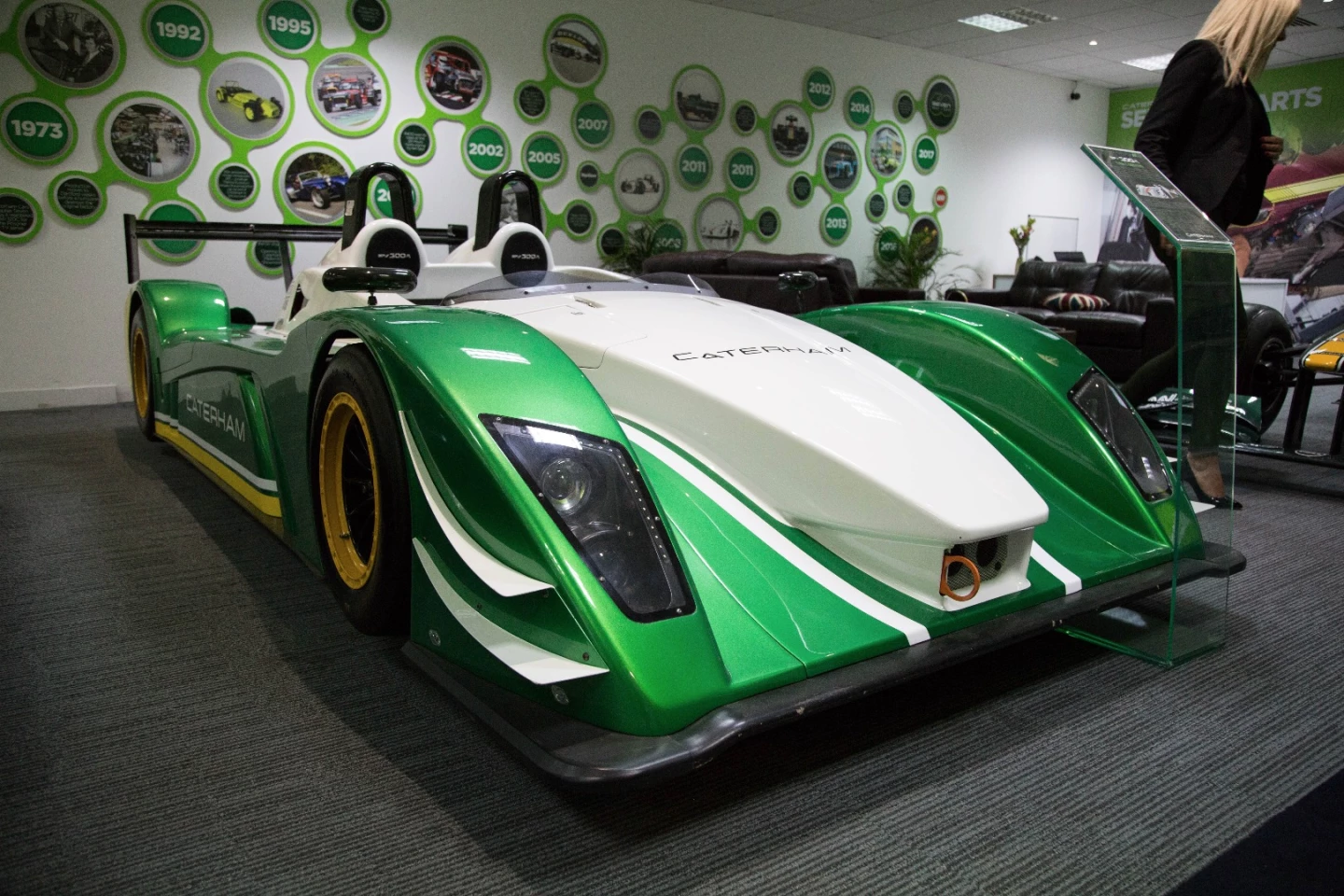
None of the concepts made it off the ground, but all show a desire to push the envelope. We wouldn't be expecting an all-new take on the Seven, or another charge into Formula 1, but the brand isn't resting on its laurels. Whatever the next step, you can be confident it will be taken in line with the driver-first ethos of the Seven, too.
"We are just a small business, full of people who are just genuinely passionate and enthusiastic about the car and what the car originally was, and how we can evolve it without deferring too far," Randall says. "It's always remaining true to the fact [the Seven is] just supposed to be fun. It was never supposed to be anything else."
Take a flick through our gallery for a look at the colorful cornucopia of Caterhams on show in Crawley. You can also ride on board with Charles Pic as he hustles a 620R up the hill at Goodwood in the video below.
More information: Caterham Cars
